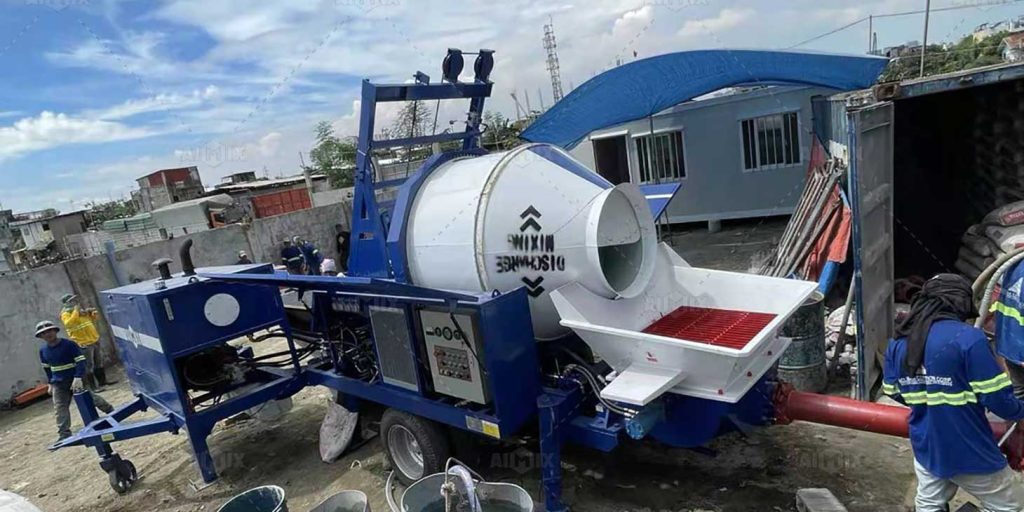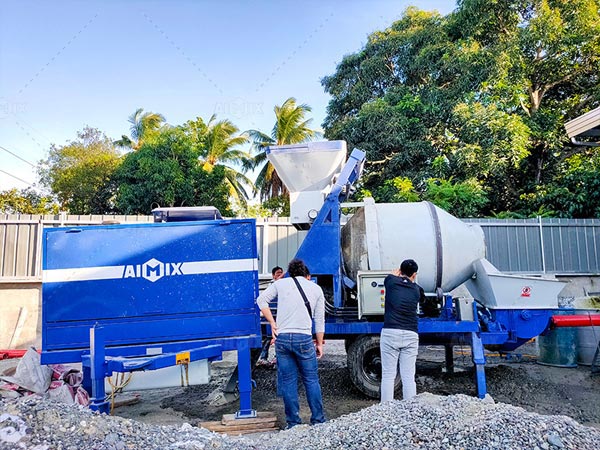The pumping system is the heart of a concrete mixer with pump, enabling the seamless transfer of concrete to various construction sites. Understanding its operation is crucial for maximizing efficiency and productivity in construction projects.
The Role of the Pumping System
The pumping system of a concrete mixer with pump serves as the vital component responsible for transferring freshly mixed concrete from the mixer to the desired location. It eliminates the need for manual labor in transporting concrete and enables efficient placement even in hard-to-reach areas.
Efficient Concrete Transfer
The primary function of the pumping system is to facilitate the efficient transfer of concrete from the mixer to the construction site. It achieves this by utilizing hydraulic pressure to propel the concrete through a series of interconnected concrete pump machine pipes and hoses. This method ensures a continuous flow of concrete, minimizing downtime and improving overall productivity on the job site.
Precise Placement
In addition to transferring concrete, the pumping system allows for precise placement of the material at the desired location. This is achieved through the use of specialized nozzles and booms attached to the end of the delivery hose. By controlling the direction and flow of the concrete, operators can accurately deposit the material exactly where it is needed, reducing waste and optimizing construction quality.

Key Components and Their Functions
The pumping system of a concrete mixer with pump consists of several key components, each serving a specific function in the concrete transfer process. Understanding these components is essential for ensuring the proper operation and maintenance of the system.
Hydraulic Pump
At the heart of the pumping system is the hydraulic pump, which generates the pressure needed to propel the concrete through the delivery system. Typically powered by a diesel engine or electric motor, the hydraulic pump of concrete mini pump converts mechanical energy into hydraulic energy, driving the movement of the concrete.
The hydraulic pump operates by drawing hydraulic fluid from a reservoir and forcing it through a series of valves and pistons, creating high-pressure flow that powers the concrete delivery process. Its efficiency and reliability are critical factors in the overall performance of the pumping system.

Delivery Pipeline
The delivery pipeline consists of a series of interconnected pipes and hoses that transport the concrete from the mixer to the construction site. Made of durable materials such as steel or reinforced rubber, the delivery pipeline is designed to withstand the high pressures and abrasive nature of the concrete. Learn more details here: https://aimixconcretesolution.com/.
The delivery pipeline plays a crucial role in maintaining a continuous flow of concrete and ensuring uniform distribution at the point of placement. Proper installation and maintenance of the pipeline are essential for preventing leaks, blockages, and other issues that could disrupt the concrete delivery process.
Control System
The control system of the pumping system allows operators to monitor and adjust various parameters during the concrete transfer process. It typically includes features such as remote control capabilities, flow rate adjustment, and pressure monitoring to ensure precise control over the delivery operation.
By leveraging advanced technology and automation, the control system enhances the efficiency and accuracy of the concrete pumping process, reducing the risk of errors and improving overall productivity on the job site. Regular inspection and calibration of the control system of concrete mixing pump are essential for maintaining optimal performance and safety.
In conclusion, the pumping system of a concrete mixer with pump is a sophisticated and essential component that enables efficient and precise transfer of concrete in construction projects. By understanding its operation and key components, construction professionals can maximize productivity and ensure the success of their projects.